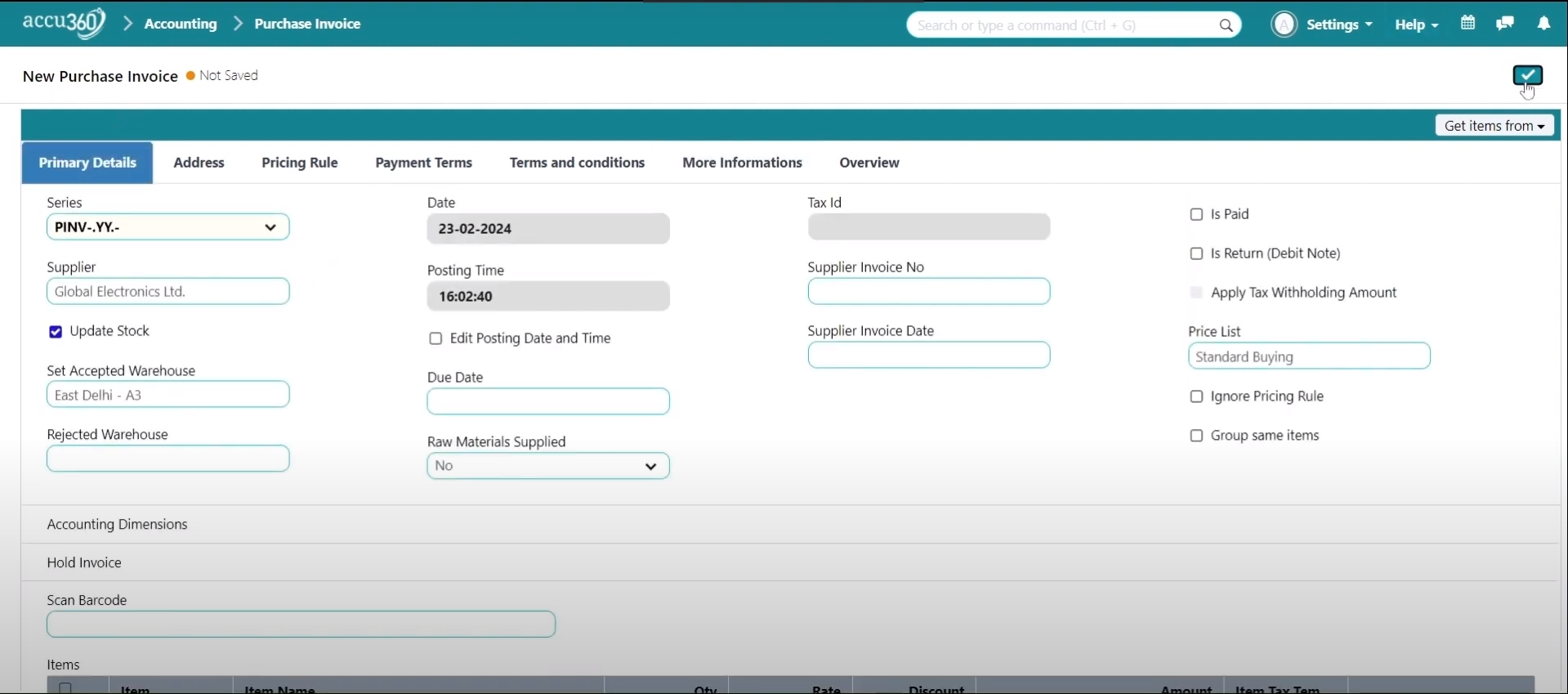¶ Unit Of Measurement
A Unit of Measurement (UoM) refers to a standardized quantity used to express a physical quantity. It could be used to measure items in terms of a standardized quantity for example - Box , Carton or meters etc . By using the same UoM for a product, ensures consistency and clarity throughout the organization. It also helps in the smooth communication with all the stakeholders like - Customer, Supplier , Management etc.
Prerequisites
¶ Default UoM
ACCU360 ERP provides more than 200 default UoM options to choose from , with an option to add your own customized UoM
Here you can see all the default UoM
“Despite a large variety of UoMs, you always have the option to create new UoMs as per your need.”
Open any existing item and set or change the default UoM

¶ UoM - Conversion Factor
A conversion factor is a number that helps in converting one UoM to another.
In any existing item scroll down and you will find a table name UOMs / Unit of Measure
The Coversion factor which was entered at the time of Item creation will be shown here

Click on the + icon to add a new row

Mention another Conversion factors for the same item.
For example - In the given image a box have 15 units. So, the Conversion factor would be 15
Similarly carton have 30 Units. Hence the Conversion factor is 30.

Then click the Right tick to save

¶ Steps Change UoM in a Document
¶ Step 1 - Click on the Small Downward Arrow
- While creating any transactional document Click on the small downward arrow in front of the item to Open the Expanded View

¶ Step 2 - Change the Default UoM
- Fianlly change the default UoM with the one which is more suitable for the transaction
.png)
¶ Step 3 - Save the Document

¶ Impact of Conversion factors
-
Error Correction: For example - an employee mistakenly passes a purchase entry for two units instead of the correct quantity of 30 units. This error would lead to incorrect information in the system, this highlights the importance of setting up conversion factors accurately to avoid such discrepancies.
-
System Accuracy: By setting up conversion factors in the system, for example - defining that one box equals 15 units and one carton equals 30 units, the system can accurately reflect the quantity of items received or transferred, ensuring that the inventory records match the actual physical inventory.

- Stock Ledger Accuracy: The stock ledger accurately reflects the quantity of items in stock based on the defined conversion factors. Even though only two boxes were purchased, the system correctly shows 30 units in stock, aligning with the conversion factor set for the item.
.png)
- Operational Efficiency: Properly configured conversion factors streamline stock entries and transactions, reducing the likelihood of errors and ensuring smooth operations. This efficiency helps organizations effectively manage their inventory and minimize discrepancies.